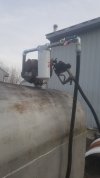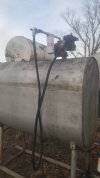cfherrman
Senior Member
A 100 gallon might not work with your bed and ball if it's a L tank
We've used an L tank in the bed of a pickup with a gooseneck ball for 20 years, never been a problem. Maybe if a guy had one of those new 5.5' short beds it would be an issue.A 100 gallon might not work with your bed and ball if it's a L tank
We've used an L tank in the bed of a pickup with a gooseneck ball for 20 years, never been a problem. Maybe if a guy had one of those new 5.5' short beds it would be an issue.
Agree; but I've never had a short bed truck. These tanks actually fit right up to the interior wheel arches leaving about an inch between each bedside and about six inches from tank sidewall to bed interior sidewall. I think with the little RV generator I carry there will be about 24" to 26" of clearance between the hose reel, and the generator enclosure I can sneak a deck box into and that will make use of the entire "L" section of the tank.It depends on the tank and the bed. My work truck (not mine) they got a 100 gallon for it and it's going to cover up the ball, instead of getting the correct tank we are just going to remove the ball which is stupid but at least we don't use the ball much. Truck is just a regular short bed.
The tank I bought for my truck the 60 gallon was sold out so I bought the 90 and it was too wide to fit in-between the wheel wells, $200 and a welder later it did, now it's the same size as the 60.
Always measure.
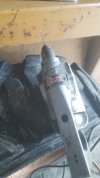
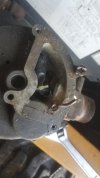
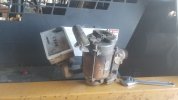
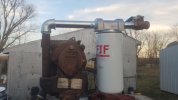
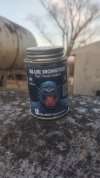
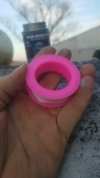
With exhaust studs I've always had good luck getting the ears of the manifold red and keeping it there for a few seconds playing the torch around the perimeter of the broken fastener and then allowing to cool a couple of minutes, then repeating. The third time around the perimeter staying directly off the fastener and twisting force applied will usually walk them out. Stud extractors work well if there is enough of a "nubb" to grab hold of.I don’t have extensive experience but I center drilled a broken exhaust manifold bolt nicely (luck). No broken bolt tool worked. I then went up in bit size until I saw evidence of the internal threads in the manifold. I then was able to use a pick and similar tools to pry what was left of the stud threads away from the internal threads.
I recently have seen a machinist demo this in a mill.
I've sure done that a bunch too. These are nothing special; 5/16-18 countersunk head and only about 1/2" length, (under head taper). Had they been busted flush with the top I probably would have went that way but these are a below and I really don't want to hurt that casting.I enjoy welding nuts to snapped bolts
I use, (and subsequently wear) a lot of anti-seize when installing fasteners; especially stainless steel as it galls so easily if not used.Any time you have steel fasteners installed into alloy castings, you're going to have major thread corrosion after just a few short years. I hate them with a passion.
If only some generous manager had said, "Hey guys, put a smear of Never-Seez on those bolts", when they were assembled.
I have NEVER found even the faintest sign of any anti-seize on any factory fastener, ever.
